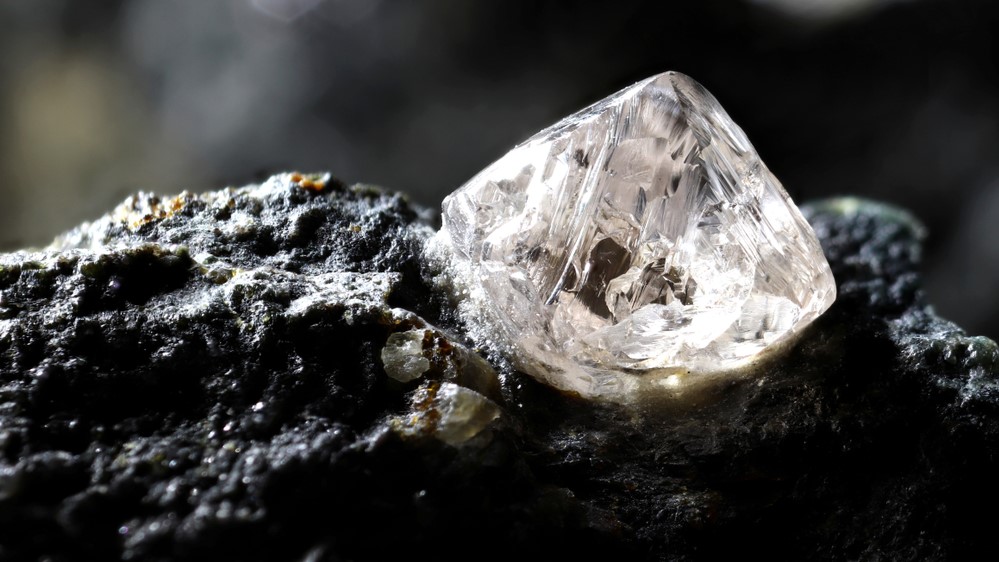Diamond hauled from deep inside Earth holds never-before-seen mineral
Researchers thought the mineral was impossible to find on Earth's surface.
Within a diamond hauled from deep beneath Earth's surface, scientists have discovered the first example of a never-before-seen mineral.
Named davemaoite after prominent geophysicist Ho-kwang (Dave) Mao, the mineral is the first example of a high-pressure calcium silicate perovskite (CaSiO3) found on Earth. Another form of CaSiO3, known as wollastonite, is commonly found across the globe, but davemaoite has a crystalline structure that forms only under high pressure and high temperatures in Earth's mantle, the mainly solid layer of Earth trapped between the outer core and the crust.
Davemaoite has long been expected to be an abundant and geochemically important mineral in Earth's mantle. But scientists have never found any direct evidence of its existence because it breaks down into other minerals when it moves toward the surface and pressure decreases. However, analysis of a diamond from Botswana, which formed in the mantle around 410 miles (660 kilometers) below Earth's surface, has revealed a sample of intact davemaoite trapped inside. As a result, the International Mineralogical Association has now confirmed davemaoite as a new mineral.
Related: Earth's 8 biggest mysteries
"The discovery of davemaoite came as a surprise," lead author Oliver Tschauner, a mineralogist at the University of Nevada, Las Vegas, told Live Science.
Tschauner and his colleagues uncovered the davemaoite sample with a technique known as synchrotron X-ray diffraction, which focuses a high-energy beam of X-rays on certain spots within the diamond with microscopic precision. By measuring the angle and intensity of the returning light, researchers can decipher what's inside, Tschauner said. The sample of davemaoite within the diamond was just a few micrometers (millionths of a meter) in size, so less-powerful sampling techniques would have missed it, he added.
Davemaoite is believed to play an important geochemical role in Earth's mantle. Scientists theorize that the mineral may also contain other trace elements, including uranium and thorium, which release heat via radioactive decay. Therefore, davemaoite may help to generate a substantial amount of heat in the mantle, Tschauner said.
Get the world’s most fascinating discoveries delivered straight to your inbox.
In a 2014 study published in the journal Science, researchers described another theoretical high-pressure mineral from the mantle, known as bridgmanite. However, the sample of bridgmanite did not originate from the mantle but rather inside a meteorite. The discovery of davemaoite shows that diamonds can form farther down in the mantle than previously thought, and it suggests that they might be the best place to look for more new minerals from the mantle, Tschauner said.
"The work by Tschauner et al. inspires hope in the discovery of other difficult high-pressure phases in nature," Yingwei Fe, a geophysicist at the Carnegie Institution for Science in Washington, D.C., who was not involved in the study, said in a related Science article. "Such direct sampling of the inaccessible lower mantle would fill our knowledge gap in chemical composition of the entire mantle of our planet."
The study was published online Nov. 11 in the journal Science.
Originally published on Live Science.

Harry is a U.K.-based senior staff writer at Live Science. He studied marine biology at the University of Exeter before training to become a journalist. He covers a wide range of topics including space exploration, planetary science, space weather, climate change, animal behavior and paleontology. His recent work on the solar maximum won "best space submission" at the 2024 Aerospace Media Awards and was shortlisted in the "top scoop" category at the NCTJ Awards for Excellence in 2023. He also writes Live Science's weekly Earth from space series.



